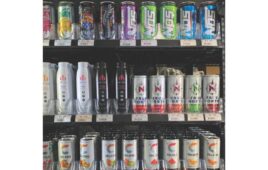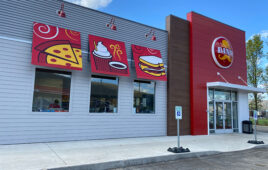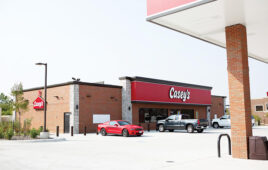 Just labeling offerings “low sodium” or “low fat” doesn’t cut it anymore as a growing number of consumers look for simple, wholesome and recognizable ingredients in bakery items.
Just labeling offerings “low sodium” or “low fat” doesn’t cut it anymore as a growing number of consumers look for simple, wholesome and recognizable ingredients in bakery items.
By Marilyn Odesser-Torpey, Assistant Editor
To gain consumers’ trust, you have to tell them what they want to know. According to the Bellevue, Wash.-based trend-tracking company the Hartman Group, 64% of consumers want companies to communicate what ingredients are in a food or beverage product.
Another, 43% prefer to know where companies source ingredients to make products.
Green Zebra Grocery—featured in this month’s Chains to Watch article on page 24—with two locations in Portland, Ore. (and two more set to open in the next year), has taken the call for information to heart.
“We believe in transparency and label all ingredients in all of our products because our customers care a lot about where and how their food was grown and produced,” said Green Zebra CEO Lisa Sedlar.
The stores get their fresh pastries and breads from five local bakeries. All of the items are merchandised at Green Zebra under the brand names of the bakeries that produce them.
“We highlight the brands prominently because they have a rabid following,” Sedlar said.
Gluten-free products are very much in demand at the Green Zebra stores. The company sources these products from two of its local bakery partners. Among the top sellers are gluten-free oatmeal raisin cookies, cupcakes and bars. Of the 6-8 varieties of bread that are offered, several are also gluten free.
One of the stores’ signature items is the carrot cake made from organic carrots, raisins, pineapple and walnuts. It is sold by the slice and “it’s simply the best carrot cake ever,” said Sedlar.
For many demographics, especially older consumers, portion size is important, according to Sara Schmansky, director of Nielsen’s Perishables Group. Many are looking for single servings and smaller package sizes.
Green Zebra Grocery stores carry about 40 different pastry SKUs and display them in dedicated cases. Peak sales hours are between 7 a.m. and 2 p.m. although, Sedlar said, cookies are a good seller any time of day.
After 2 p.m., the pastries that are left are individually wrapped for grab and go to capture afternoon snackers. A coffee and pastry “Afternoon Delight” bundle deal, which the c-store promotes through signage and online, helps keep the bakery items moving all day. Sedlar pointed out that both coffee and pastry sales at the stores are increasing overall.
“Chocolate anything” sells well for the company, especially chocolate chip cookies from a bakery called Posie’s, Sedlar said. Customers also favor their frosted sugar cookies.
KEEPING PACE
Foreseeing the trend of breakfast-all-day, two years ago, La Crosse, Wis.-based Kwik Trip made a conscious decision to keep its pastry cases fully stocked, even with traditional breakfast items such as long Johns, all day, said Paul Servais, the company’s food service zone leader.
“If we find we’re out of long John’s by 10 a.m., we make more,” said Servais.
Fresh bakery is one of Kwik Trip’s “No. 1 priorities because it is a huge profit center for the stores,” Servais explained. It is the second-largest category in Kwik Trip food sales, following behind hot foods.
Kwik Trip sells close to 800 units of bakery products per store per day (not including breads and buns). The company expects category double-digit growth again in 2017. Kwik Trip currently operates 486 convenience stores in Wisconsin, Minnesota and Iowa.
Its Kwikery Bake Shoppe occupies a significant amount of space—a dedicated eight-foot display plus 1-3 tables for store-packaged items in bags and clamshells—at each location.
“Whether it’s a three-pack of long Johns or Persians or four cookies in a Zip-Lock bag, we can’t make them up fast enough, that’s how quickly they sell,” Servais said.
Raised yeast Glazers doughnuts are produced in Kwik Trip’s proprietary, 212,000- square-foot bakery, which employs 340 workers. The fryers at the bakery run 24 hours a day.
Breads and buns—which are also merchandised under The Kwikery brand—are also produced at the central bakery. Glazers doughnuts and Kwikery’s nine different varieties of breads and five kinds of buns are delivered fresh to the stores each day. Other pastry items, including cake doughnuts, muffins, cookies, cinnamon rolls, long Johns, bars and bagels, are flash frozen, to be thawed and finished at the stores as needed.
Glazers doughnuts are one of Kwik Trip’s signature items as well as muffins and cinnamon rolls “with boatloads of frosting—they’re awesome,” he said. New items are being introduced as limited time offers (LTOs) on a non-stop basis, Servais noted. In July, the company was testing a new apple fritter in 80 of its stores.
Bakery items are promoted every week with offerings of cookies, four for $1, or a six-pack of Glazers for $1.99.
At Kwik Trip, Bake Shoppe sales are tracked hourly to determine how often the case needs to be refilled and refreshed. Specific minimums of each item are required at all times. The muffin display, for example, should always be kept full, while there must always be at least two full trays of Glazers doughnuts and 18 long Johns.
Throughout the day, the bakery case, including the tag rails, are cleaned to keep it fresh and appetizing. The front of the case and the area and around the packaged pastry tables are also swept and mopped frequently.
DESSERT DEMAND
Bakery sales have remained consistent over the past five years, reported Nielsen’s Schmansky. For the 52 weeks ending May 28, 2016, dollar sales in the bakery category totaled $11.4 billion. That reflects a 4% dollar sales increase and a 2.3% rise in volume sales. The Madison, Wis.-based International Dairy-Deli-Bakery Association projects that the in-store bakery market will reach $18.4 billion in sales by 2020.
Desserts remain the cornerstone of bakery sales, with nearly 50% of total department sales, followed by breads and rolls (28%), breakfast bakery (21%) and miscellaneous bakery (2%), Schmansky said. Among the fastest-growing in-store bakery products tracked by Nielsen are brownies and dessert bars—especially iced varieties— during the 52 weeks ending May 28, 2016, with dollar sales of $213.9 million, a 10.6% increase over the same period last year.
During the same period, cookies generated $694.9 million in dollar sales, a hike of 9.2% over 2015, according to Nielsen data.
Schmansky also pointed to a trend of “gourmetization” of products to appeal to the growing number of shoppers seeking premium products. In-store bakeries are highlighting richer flavors, fresh, enriched, superior-quality baked breads and decadent specialties such as brioche and filled doughnuts.
Cannoli, for example, experienced a 16% increase in dollar sales over a year ago and tres leches cake an 8% hike. Breads that carried the description “artisan” accounted for 30% of total bread dollar sales during this year, a 53% growth in dollar sales over last year.
Gluten-free items still account for a relatively small amount of in-store bakery sales (1%), but they are steadily growing—5% over a year ago.
According to Schmansky, growing claims in the bakery include no preservatives, no artificial colors or flavors, high fructose corn syrup-free and organic. Retailers can highlight these claims through signage and stickers, more focused merchandising and increased employee education and expertise, she said.




